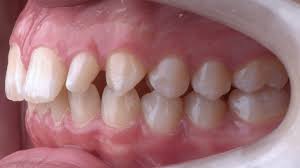Biomechanical Principles of Tooth Movement: A Comprehensive Review of Force Application in Aligners
Orthodontic tooth movement is a complex biomechanical process governed by the principles of force application and biological response. With the rise of clear aligners as a preferred alternative to traditional braces, understanding how forces interact with dental and periodontal structures has become more critical than ever. This article explores the biomechanics behind clear aligners, shedding light on the forces that drive tooth movement and the factors influencing their effectiveness
Azeem Jameel
3/13/20252 min read


Biomechanical Principles of Tooth Movement: A Comprehensive Review of Force Application in Aligners
Orthodontic tooth movement is a complex biomechanical process governed by the principles of force application and biological response. With the rise of clear aligners as a preferred alternative to traditional braces, understanding how forces interact with dental and periodontal structures has become more critical than ever. This article explores the biomechanics behind clear aligners, shedding light on the forces that drive tooth movement and the factors influencing their effectiveness.
Understanding Biomechanics in Orthodontics
Tooth movement occurs when controlled forces are applied to the teeth, stimulating bone remodeling in the periodontal ligament (PDL) and surrounding alveolar bone. The biological response includes bone resorption on the pressure side and bone deposition on the tension side, allowing gradual repositioning of teeth. The fundamental biomechanical principles governing this process include:
Magnitude of Force: Optimal force levels are necessary to induce efficient movement without causing damage to the periodontium.
Duration of Force: Continuous, light forces are more effective than intermittent heavy forces, as they promote steady biological adaptation.
Direction of Force: Forces must be applied in a way that aligns with the desired movement, ensuring predictable and controlled tooth shifts.
Force Application in Clear Aligners
Unlike fixed appliances, clear aligners rely on programmed force delivery through their unique design and sequential wear. Each aligner tray exerts a predetermined force on specific teeth, guiding them through controlled stages of movement. The mechanics of force application in aligners include:
1. Controlled Force Distribution
Aligners apply force through a combination of surface contact and strategic pressure points. Attachments—small composite additions to teeth—help optimize force application by improving grip and directionality.
2. Tipping vs. Bodily Movement
Aligners primarily induce tipping movements, where the crown moves before the root. However, bodily movements, such as translation, require more sophisticated force systems, including optimized attachments and staging strategies.
3. Intrusion and Extrusion Challenges
Vertical tooth movements, such as intrusion (moving teeth upward) and extrusion (moving teeth downward), present challenges due to the nature of aligner mechanics. Precision cuts, elastics, and attachments enhance control over these movements.
4. Rotational Control
Rotating cylindrical teeth, such as premolars and canines, demands specialized force application. Aligners achieve this using optimized attachments and strategic pressure points to enhance rotational forces.
5. Root Torque and Anchorage Considerations
Root control, or torque, is critical for maintaining proper tooth alignment. Aligners achieve torque through the shape of the aligner trays and strategically placed force zones. Additionally, anchorage—stabilizing certain teeth to prevent unwanted movement—is managed through features like precision cuts and the use of elastics.
Factors Influencing Biomechanical Efficiency of Aligners
Several factors influence the success of force application in clear aligners:
Material Properties: Aligners are made from multilayered thermoplastic materials that balance flexibility and stiffness to provide effective force delivery.
Wear Compliance: Patients must wear aligners for 20-22 hours per day to ensure continuous force application.
Aligner Fit and Staging: Accurate impressions and well-planned treatment staging influence how efficiently forces are transmitted.
Biological Response Variability: Individual differences in bone density, periodontal health, and biological response affect tooth movement rates and treatment predictability.
Conclusion
Clear aligners have revolutionized orthodontic treatment, offering an aesthetic and comfortable alternative to traditional braces. However, their effectiveness depends on the precise application of biomechanical principles. Understanding how forces interact with teeth, bone, and periodontal structures is essential for optimizing treatment outcomes. As technology advances, improvements in aligner materials, digital treatment planning, and force application strategies will continue to refine the efficiency and predictability of clear aligner therapy.
By integrating biomechanical knowledge with innovative aligner systems, orthodontists can ensure that patients achieve optimal results with minimal complications. The future of orthodontics lies in harnessing these principles to provide even more effective and personalized treatments for every smile.

Connect
Social Accounts
+1 830 7451 586
Building 595, Block H3, Phase 2
Johar town, Lahore Pakistan
Address
Mail at:
Call at:


ClearCare Ortho offers premium-quality, exceptionally clear, and affordable orthodontic aligner treatments worldwide.
© 2023 Copyright ClearCare Ortho All Right Reserved.
info@clearcareortho.com
